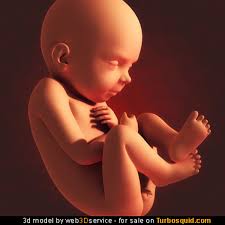Everyone has experienced muscles soreness. It’s that feeling after exercising for the first time in a while, getting in shape and after a particularly hard workout. This feeling is currently hitting home, as I have recently attempted to go on a run after being inactive for three weeks. Soreness typically leaves our muscles feeling tight and making movement painful. But why do out muscles hurt so much after we exercise? And what is the best way to prevent this discomfort?
Muscle soreness is a result of either excessive exercise, exercise followed by a long period of inactivity, or when one uses new of athletic equipment. The scientific name for muscle soreness is actually called Delayed Onset Muscle Soreness, or DOMS. DOMS is usually felt twelve to forty eight hours after activity, depending how intense the activity was. It usually lasts around a week. The science behind DOMS involves the Glycolytic System that breaks down carbohydrates to produce ATP for the body. ATP is a nucleotide containing chemical energy that is used for metabolism in our bodies. This ATP is usually used for activity that ranges in duration from thirty seconds to three minutes. There are two methods that break down the carbohydrates: fast and slow. The “fast” method is the type that typically makes you sore. This involves Amino Acid Pyruvate converting into lactic acid, which “interferes with the Calcium release from the Sarcoplasmic Reticulum” (bodybuilding). Essentially, this lactic acid that your body uses is unfamiliar, but as one exercises more and more, the lactic acid “builds up” and helps develop new muscles that the body needs so you won’t continue to feel this soreness.
But why do we feel this way for multiple days after initial exercise? DOMS can actually causes “Small microscopic tears occur in the muscle”, according to David O. Draper, director of the graduate program in sports medicine and athletic training at Brigham Young University. These damages and inflammation to one’s muscles also contribute to this painful experience. There is no one on this earth that is unaffected by soreness, and someone should not be turned off by a new physical sport or activity because of this very normal feeling.
So, we get why muscles hurt after exercising, but is there anything one can do to alleviate this pain? Thankfully there are multiple ways to do this. But what is the best way? Stretching is considered of the strongest ways to ease muscle soreness according to WebMD.com. However, research has proved otherwise. In 2002, an experiment was performed by Dr. Rob D Herbert to study the effects that stretching has after physical activity. “Blinding” the participants in the study was not possible, so a random group of three hundred adults in good health were asked to either stretch or to not stretch immediately after physical activity. The stretching that the experimental group experienced lasted 300 to 600 seconds, stretching the main muscle areas in the body and the control group did not stretch at all after physical activity. The study found that the people in the experiment did not feel any less or more soreness than the control group, concluding that “Stretching before and after exercising does not confer protection from muscle soreness”.
However, there are other ways that also do a great job in relieving muscle soreness, and do just as great as a job as stretching does. Massages of tissue that has been damaged and affected can speed up the “recovery time” from being sore. In fact an experiment that was published in the Journal of Athletic Training tested the effects of massages on sore muscles. The control and experiment groups were instructed to do “maximal isokinetic eccentric movements of the elbow flexors”. However, the experimental group was massaged for ten minutes three hours after activity and reduced swelling by 30%. The all-time, most sufficient way of treating DOMS is to exercise more! This keeps your body in aerobic motion, so the lactic acid has more time to build up.
Finding the motivation to exercise is hard enough, and DOMS just makes it even harder! But next time you are struggling to move the next day after a tough workout, but remember your body is getting stronger and blame the pain on lactic acid!
I feel your pain, bud.
Photo credit: http://www.fitstep.com/Misc/Newsletter-archives/issue65/muscle-soreness.htm



 sleep just feels so good!
sleep just feels so good!

